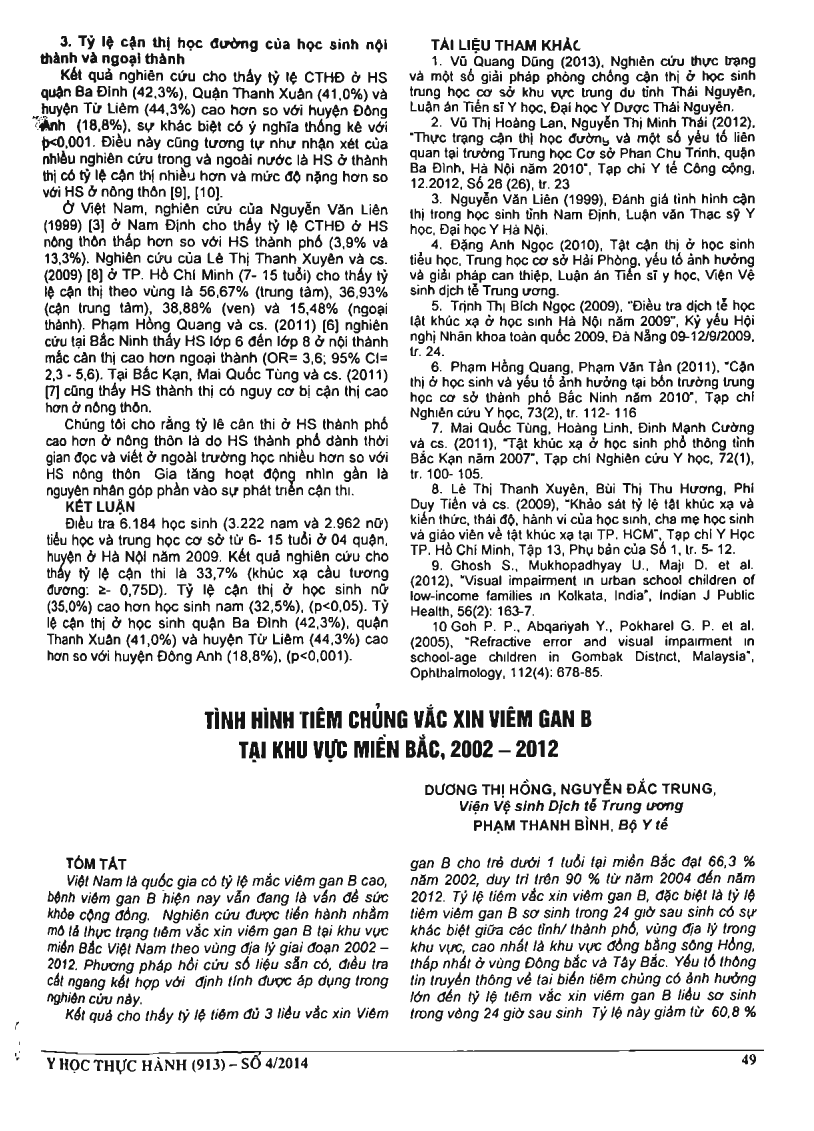
Vietnam is a country with high incidence of hepatitis B and the disase has been a current public health problem. This study was conducted to describe current status of hepatitis B vaccination in northern region of Viet Nam by geographical areas, period 2002-2012. Restrospective data collection and analytical technique, cross sectional survey combining qualitative and quantitative research methods were applied in this study. The results showed that the rate of children under 1 year of age immunized with 3 doses of Hepatitis B vaccine (HepB3) in the North reached 66.3 percent in 2002, continuously over 90 percent from 2004 to 2012. Hepatitis B vaccine coverage rate, especially rate of hepatitis B birthdose within 24 hours after birth were different between provinces/cities, geographical areas in the region, highest rates were in Hong river delta region, and lowest rates were in the Northeast and Northwest. Information and communication on Adverse Events Following Immunization (AEFls) can greatly affect to rate of Hep B birthdose within 24 hours after birth. This rate decreased from 60.8 percent in 2005 to just 27.0 percent in 2007. News about some severe AEFls and habits of mothers in the remote areas that not bring the child out of the house just after birth have been main reasons affecting rate of Hep B birthdose within 24 hours after birth. The solutions including Improving modes of communication, training staff and providing guidelines for mothers, strengthening immunization service of the facilitieslhospital were conducted in the years 20082010. The solutions gradually help to improve the rate of Hep B birthdose within 24 hours after birth, the rate reached 71.9 percent and HepB3 was over 90 percent in 2012.
- Đăng nhập để gửi ý kiến
